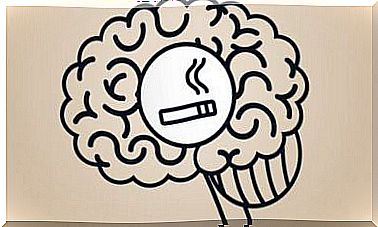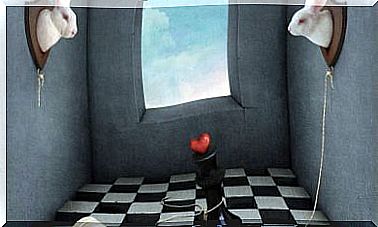We Tell You All About The Cinguli Gyrus
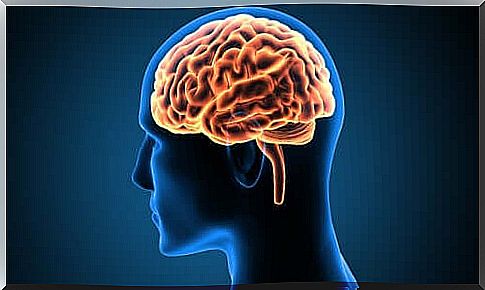
The gyrus cinguli is a part of the human brain that exists in both hemispheres. This structure, together with the parahippocampal gyrus, forms the limbic cortex of the brain’s limbic system.
When you are restless or anxious, your cingulate gyrus is active. It helps you express your emotional state through gestures, posture and movement.
As you can imagine, the cingulate gyrus has become very important for neurocognitive and cognitive studies. In addition, scientists are discovering that this part of the human brain is involved in various brain functions and in some disorders.
Alzheimer’s disease and depression are two important examples of disorders involving the cingulate gyrus. However, he is also implicated in conditions such as:
- schizophrenia
- bipolar disorder
- some anxiety disorders
- addiction
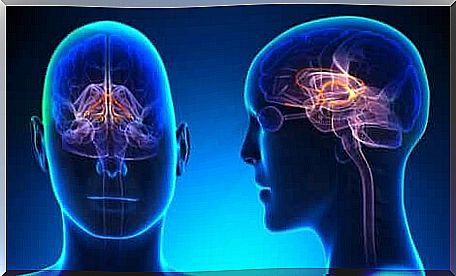
The structure and function of the cingulate gyrus
Anterior cingulate cortex
This part of the cerebral cortex plays a special role in the autonomic and endocrine responses to emotions and memory storage.
Neuroscientists also think it helps regulate endocrine function and the expression of autonomic states. It does that through projections with the nucleus solitarius and the dorsal nucleus of the vagus nerve.
These are not the only areas where the anterior cingulate cortex makes projections. He also has extensive connections to:
- The amygdala. This area of the brain is heavily involved in the emotional response.
- The periaqueductal gray. This area plays an important role in modulating certain pain circuits.
- The dorsal nucleus and the posterior thoracic nucleus. Scientists think that functions such as learning, memory and attention have to do with this.
Medial cingulate cortex
This part of the cingulate gyrus is activated when you make predictions about the outcomes of behavior. It also helps you perform these behaviors through projections to the prefrontal dorsolateral cortex, supplementary motor areas, parietal cortex, and spinal cord.
Therefore, scientists believe that the medial cingulate cortex is related to information processing during decision-making. Specifically, it involves decisions based on rewards and cognitive activity related to intentional motor control.
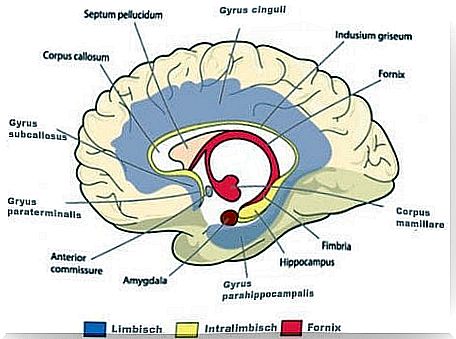
posterior cingulate cortex
The cingulate gyrus involves a topokinetic memory circuit. Concretely, its primary function takes place in visual-spatial orientation.
The front part turns out to be crucial in the predefined network of the brain. In other words, a system in the brain that remains active even when you don’t pay attention to external stimuli.
Neuroscientists also think it plays a role in internally focused cognition processes. Some of these are, for example, memory recovery, planning and spatial information processing.
They also theorize that this part of the brain is related to self-control. It can also play a role in the evaluation of self-relevance events.
The dorsal portion of the posterior cingulate cortex is closely associated with the premotor, visual dorsal, and orbitofrontal regions of the brain. It also participates in body orientation and visual space.
Retrosplenial Cortex
This part of the cinguli gyrus appears to play a role in autobiographical memory and imagination. Because of this, this part of the cingulate gyrus may have something to do with neurological disorders that cause memory loss.
It seems that the gyrus cinguli mediates the human emotional response. It is also responsible for assigning value to emotions in response to external and internal stimuli. The cingulate gyrus is especially important for expressing your emotions out loud.
Finally, damage to the cingulate gyrus can affect your ability to respond to certain stimuli. This can lead to aggressive behaviour, shyness or a decrease in emotional expression, for example.

